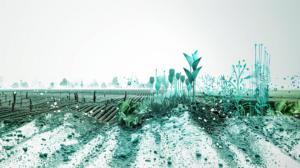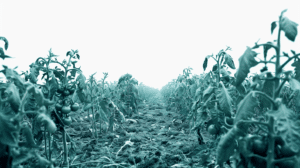Wildfires and Crop Cultivation: Impacts on Food Supply Chain and Adaptive Agricultural Practices
Wildfires have become an increasingly prevalent and concerning phenomenon in North America. Over the past decade, the number of acres burned in wildfires in North America is steadily rising, with an average 9 million acres of land burned each year. This year, however, had broken records, with 27.7 million acres on fire in Canada alone – and these numbers are only expected to grow, as the number of wildfires is projected to rise by 50% by 2100.
These massive infernos have been wreaking havoc on the environment, human lives, and infrastructure. However, one aspect that often goes unnoticed is the severe impact wildfires can have on crop cultivation and the overall food supply chain.
Unlike most weather-related disruptions, there are few established agronomic protocols for wildfires. This is due both to the novelty of the phenomenon and the difficulty of replicating smoke conditions under controlled lab settings. The resulting gap in knowledge prevents the creation of “wildfire” resilient varieties and mitigation strategies. For farmers from California to Quebec, this is uncharted territory.
Wildfires and crops
As fire seasons grow longer and more extensive, spring, summer, and even autumn crops can suffer diminished sunlight, heightened CO2 levels, warmer and drier ground conditions, and disruptions to cultivation schedules due to unsafe working conditions.
During wildfires, thick smoke blankets large areas, significantly reducing the amount of sunlight reaching crops. Sunlight is crucial for photosynthesis, the process by which plants convert sunlight into energy. With reduced sunlight, crops struggle to photosynthesize effectively, leading to stunted growth, reduced yields, and lower nutritional quality.
For crops like corn, this smoke effect may actually cause crops to rot, while in potatoes, it may simply stunt growth and disrupt quality prediction.
Additionally, prolonged exposure to smoke can cause leaf damage and even plant death in severe cases.
While the elevated CO2 concentrations may actually be productive to yields, the Intergovernmental panel on climate change (IPCC) warns that these crops may be less nutritionally dense – creating disruptions for food manufacturers who will need to recalibrate products and processes in order to avoid shortages and maintain consistent quality.
In California, where forests fires have been raging near fields and vineyards, growers needed to clean their produce to eliminate ash residue, damaging the quality of many perishable goods.
Wildfires generate intense heat that can have detrimental effects on nearby agricultural fields. The scorching ground heat from wildfires can penetrate the soil, creating covert heat conditions that are not registered by hyperlocal weather services, damaging root systems and compromising the health and productivity of crops. Excessive heat exposure may lead to wilting, dehydration, and even death of plants. Consequently, farmers face the daunting challenge of rehabilitating fire-affected soils to restore crop productivity.
During periods of intense wildfire activity, the dense smoke and hazardous air quality present a significant health risk to farmworkers, forcing many to stay away from work. The absence of farm laborers due to smoke-related health concerns can disrupt critical agricultural activities, such as planting, harvesting, and post-harvest handling. These disruptions only compound down the value chain, with logistical delays, miscommunications and blockages leading to spillage and lost revenues.
Growing food In a changing climate
The changing dynamics of wildfires necessitate the development of adaptive and resilient agricultural practices. Real-world data plays a pivotal role in understanding the effects of wildfires on crops, and fine-tuning agronomic protocols for different crop varieties, soil types, and management practices. These protocols may include smoke-resistant crop varieties, crop protection measures, and soil management techniques tailored to the post-fire environment. Collaborative, data-facilitated efforts between researchers, farmers, and policymakers are essential to “fireproof” north American food production.
The increasing frequency and severity of wildfires in North America pose significant challenges to crop cultivation and the overall food supply chain. Stunted growth, rot, lost yields, and post-harvest spillage are only some of the threats posed by wildfires – and our changing climate. It is crucial to adapt and implement climate-resilient agricultural practices to ensure a sustainable and secure food supply for present and future generations, even in the face of these challenging circumstances.
Sources:








